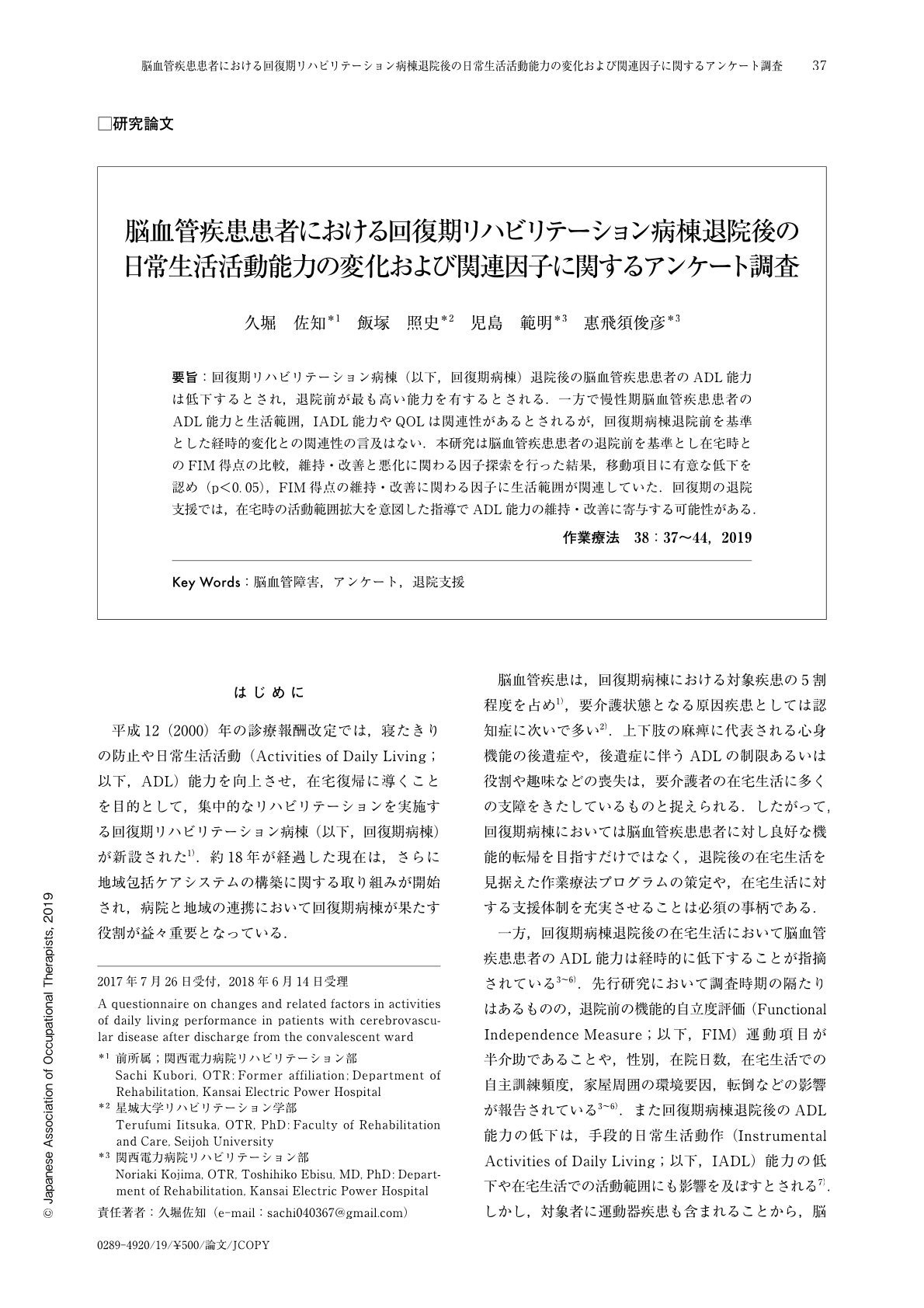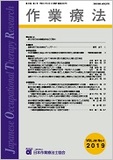Japanese
English
- 販売していません
- Abstract 文献概要
- 1ページ目 Look Inside
- 参考文献 Reference
- サイト内被引用 Cited by
要旨:回復期リハビリテーション病棟(以下,回復期病棟)退院後の脳血管疾患患者のADL能力は低下するとされ,退院前が最も高い能力を有するとされる.一方で慢性期脳血管疾患患者のADL能力と生活範囲,IADL能力やQOLは関連性があるとされるが,回復期病棟退院前を基準とした経時的変化との関連性の言及はない.本研究は脳血管疾患患者の退院前を基準とし在宅時とのFIM得点の比較,維持・改善と悪化に関わる因子探索を行った結果,移動項目に有意な低下を認め(p<0.05),FIM得点の維持・改善に関わる因子に生活範囲が関連していた.回復期の退院支援では,在宅時の活動範囲拡大を意図した指導でADL能力の維持・改善に寄与する可能性がある.
Activities of daily living (ADL) performance among stroke patients after the convalescent period have been known to decrease gradually, indicating that stroke patients before discharge from the convalescent ward might have the highest ADL performance. ADL performance among chronic stroke patients is related to daily living space, instrumental ADL performance, and quality of life. However, the relationship between ADL performance and these factors among stroke patients before discharge from the convalescent ward is unclear. The aim of the present study was to compare and analyze FIM scores among stroke patients before and after discharge from the convalescent ward. Results indicate that FIM mobility items were significantly decreased (p<0.05), and the sole determinant factor of change in FIM score was daily living space. The present study demonstrated that encouraging an increase in daily living space might contribute to maintaining or improving ADL performance after discharge from the convalescent ward.

Copyright © 2019, Japanese Association of Occupational Therapists. All rights reserved.


